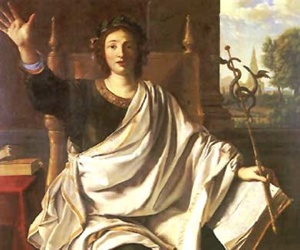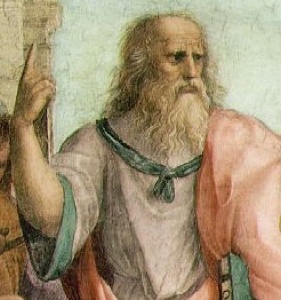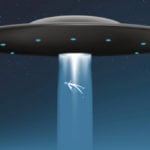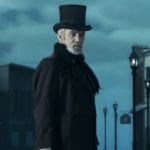 Music
Music  Music
Music  History
History 10 Less Than Jolly Events That Occurred on December 25
 Weird Stuff
Weird Stuff 10 Funny Ways That Researchers Overthink Christmas
 Politics
Politics 10 Political Scandals That Sent Crowds Into the Streets
 Weird Stuff
Weird Stuff Ten Bizarre Facts About The Doge Meme
 Our World
Our World 10 Ways Your Christmas Tree Is More Lit Than You Think
 Movies and TV
Movies and TV The 10 Coolest Stars to Set Sail on The Love Boat
 History
History 10 Things You Didn’t Know About the American National Anthem
 Technology
Technology Top 10 Everyday Tech Buzzwords That Hide a Darker Past
 Humans
Humans 10 Everyday Human Behaviors That Are Actually Survival Instincts
 Music
Music 10 Surprising Origin Stories of Your Favorite Holiday Songs
 History
History 10 Less Than Jolly Events That Occurred on December 25
 Weird Stuff
Weird Stuff 10 Funny Ways That Researchers Overthink Christmas
Who's Behind Listverse?

Jamie Frater
Head Editor
Jamie founded Listverse due to an insatiable desire to share fascinating, obscure, and bizarre facts. He has been a guest speaker on numerous national radio and television stations and is a five time published author.
More About Us Politics
Politics 10 Political Scandals That Sent Crowds Into the Streets
 Weird Stuff
Weird Stuff Ten Bizarre Facts About The Doge Meme
 Our World
Our World 10 Ways Your Christmas Tree Is More Lit Than You Think
 Movies and TV
Movies and TV The 10 Coolest Stars to Set Sail on The Love Boat
 History
History 10 Things You Didn’t Know About the American National Anthem
 Technology
Technology Top 10 Everyday Tech Buzzwords That Hide a Darker Past
 Humans
Humans 10 Everyday Human Behaviors That Are Actually Survival Instincts
10 Rhetorical Figures
Rhetoric is the art of persuasion through written, oral, or visual means. The idea of rhetoric has been around since the classical days. One of the greatest works on this subject which still exists from the classical period is The Orators Education, by Quintilian (if you are feeling particularly generous, I give you permission to buy me a copy from my amazon wishlist – it is on page 1 and there are 5 books.) Some of the greatest speakers and speeches from history were written by people with a great knowledge of rhetoric – for example John F Kennedy, Winston Churchill. Some of the famous tropes you have probably heard of are Irony, onomatopoeia, alliteration, and assonance. I like to think of it like this: grammar is the science of good writing; rehetoric the art. That was zeugma (item 6) by the way. This is a list of ten rhetorical tropes (figures of speech) to get you started on the road to mastery of the art.
10. Polysyndeton
Employing many conjunctions between clauses, often slowing the tempo or rhythm.
Learn the art of persuasion with Thank You For Arguing at Amazon.com!
9. Asyndeton
The opposite of polysyndeton – the omission of conjunctions between clauses – employed in a very famous quote:
Brachylogia is similar to this though it omits conjunctions between single words to give a hurried feel: “John! Rise, eat, leave!”
8. Hysyteron Protoron
I love this one because you can have a lot of fun with it. This is the reversal of words based upon the order of time. This is something we all use often – the best example being: “Put on your shoes and socks” – obviously you must put your socks on first. This is a type of hyperbaton which is simply a reversal of word order without relation to time: “Why should their liberty than ours be more?” Shakespeare.
With all their sixty, fly and turn the rudder. —Shakespeare, Antony and Cleopatra 3.10.2
7. Homoioteleuton
Similarity of endings of adjacent or parallel words.
6. Zeugma
A general term describing when one part of speech (most often the main verb, but sometimes a noun) governs two or more other parts of a sentence (often in a series).
Click here to access 40,000 movies and TV shows with Amazon Prime Instant Video – 30 day free trial at Amazon.com!
5. Metonymy
Reference to something or someone by naming one of its attributes. For example, “He bought a great set of wheels” – wheels being the attribute of the actual object he bought: a car. Another example: “We await word from the crown.” The crown is an attribute of the King, and in this context is a reference to the King himself, not the crown he wears.
4. Litotes
Deliberate understatement, especially when expressing a thought by denying its opposite. This is a form of modesty often used to gain favor with one’s audience:
3. Anaphora
Repetition of the same word or group of words at the beginning of successive clauses, sentences, or lines. I am certain you will have heard the greatest modern example of this one:
we shall fight on the seas and oceans,
we shall fight with growing confidence and growing strength in the air, we shall defend our Island, whatever the cost may be,
we shall fight on the beaches,
we shall fight on the landing grounds,
we shall fight in the fields and in the streets,
we shall fight in the hills;
we shall never surrender[…] Sir Winston Churchill
Sir Winston was famed for his great speeches – but what few know is that he would pore over them making great use of rhetoric, and then memorize them. He managed to perform his speeches as if he were speaking from the top of his head. He is recognized as one of the greatest statesmen – and rhetoric is one of the reasons why.
2. Diaskeue
Something the press should use less often! This is the graphic peristasis (description of circumstances) intended to arouse the emotions.
1. Paralipsis
This is a wonderful rhetorical trope – it is stating and drawing attention to something in the very act of pretending to pass it over. A kind of irony.
I now challenge you to use at least one of these tropes in the comments below (in your own words, not quoted from a famous speech).
Sources: Silva Rhetoricae
Technorati Tags: rhetoric






